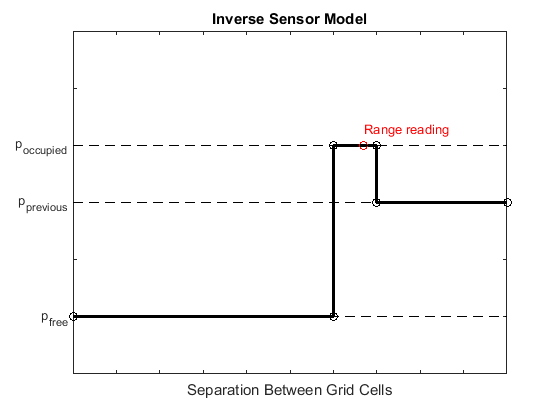insertRay
Insert ray from laser scan observation
Syntax
Description
insertRay(
inserts one or more lidar scan sensor observations in the occupancy grid,
map,pose,scan,maxrange)map, using the input lidarScan object, scan, to get ray endpoints.
The ray endpoints are considered free space if the input scan ranges are below
maxrange. Cells observed as occupied are updated with
an observation of 0.7. All other points along the ray are treated as obstacle
free and updated with an observation of 0.4. Endpoints above
maxrange are not updated. NaN values
are ignored. This behavior correlates to the inverse sensor model.
insertRay(___,
inserts rays with updated probabilities given in the two-element vector,
invModel)invModel, that corresponds to obstacle-free and
occupied observations. Use any of the previous syntaxes to input the
rays.
Examples
Input Arguments
More About
Extended Capabilities
Version History
Introduced in R2019b
![Figure contains an axes object. The axes object with title Occupancy Grid, xlabel X [meters], ylabel Y [meters] contains an object of type image.](../../examples/nav/win64/InsertLaserScansIntoOccupancyMapExample_01.png)
![Figure contains an axes object. The axes object with title Occupancy Grid, xlabel X [meters], ylabel Y [meters] contains an object of type image.](../../examples/nav/win64/InsertLaserScansIntoOccupancyMapExample_02.png)
